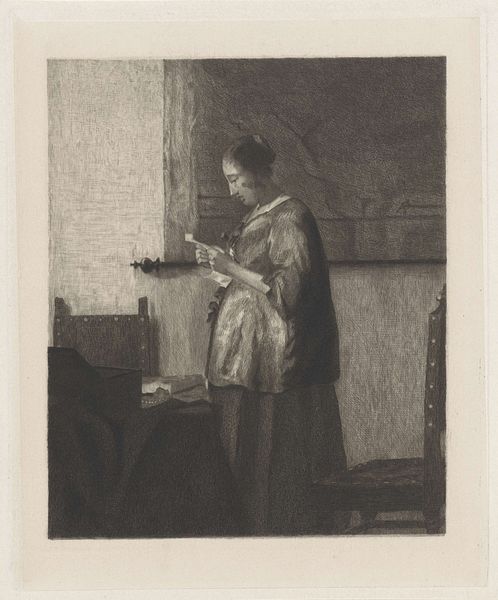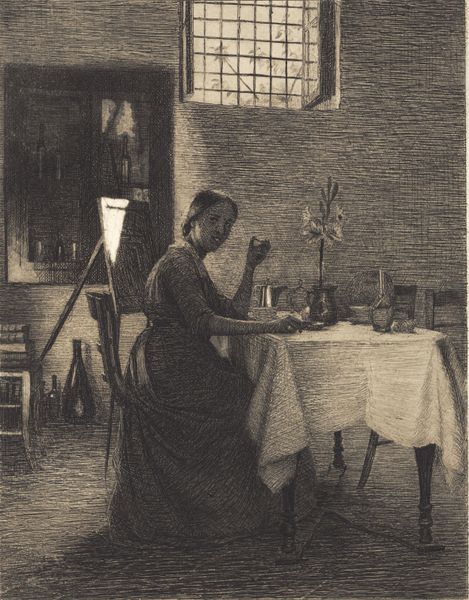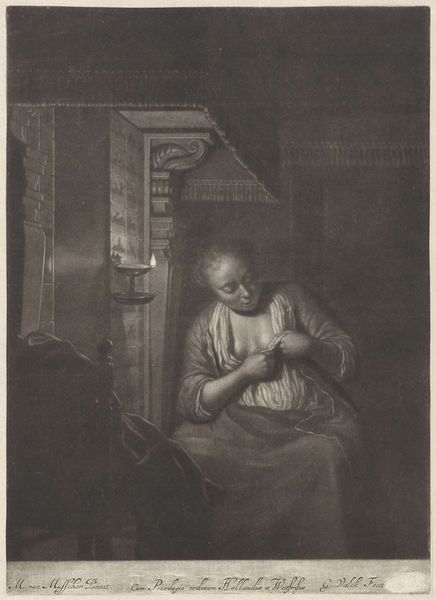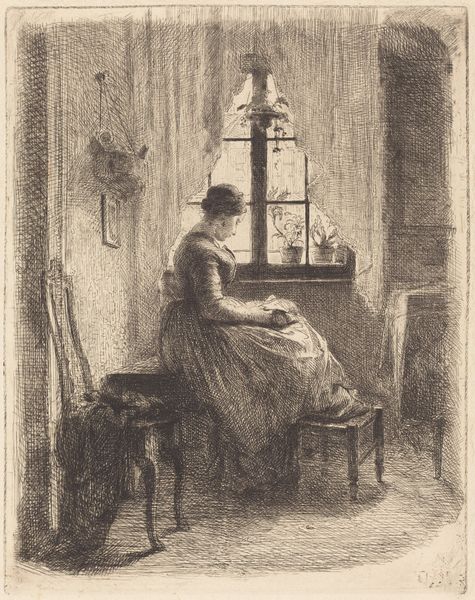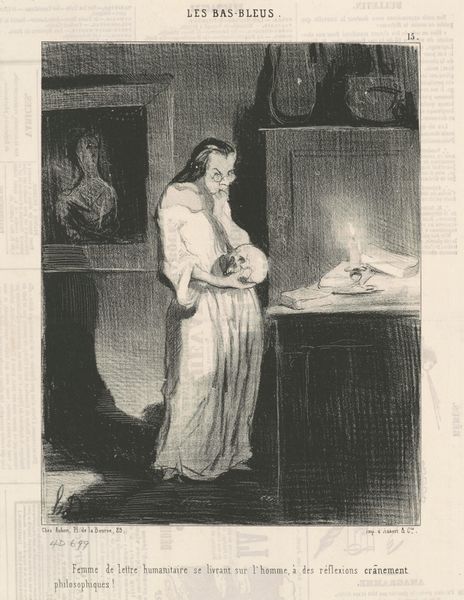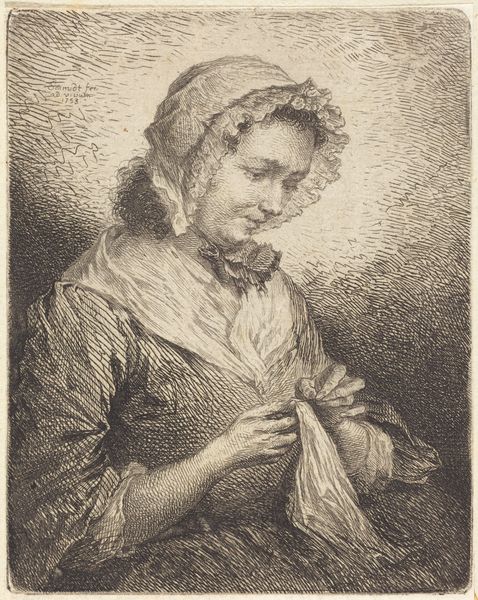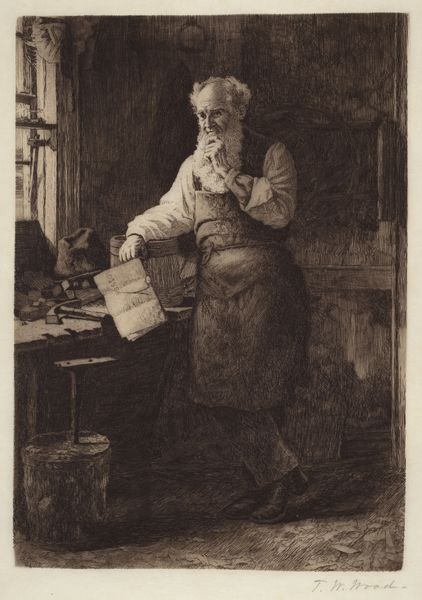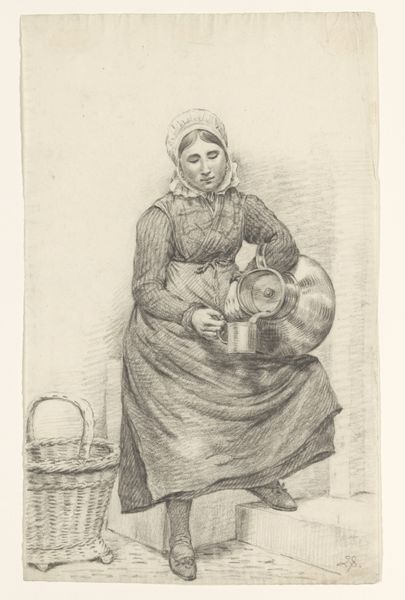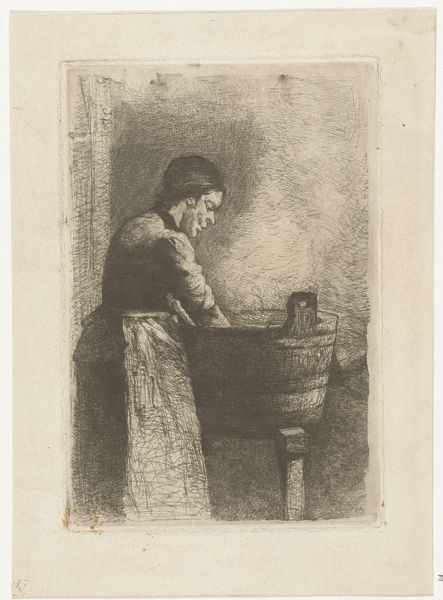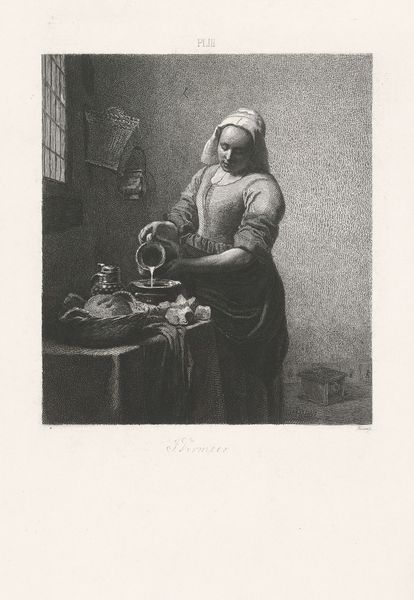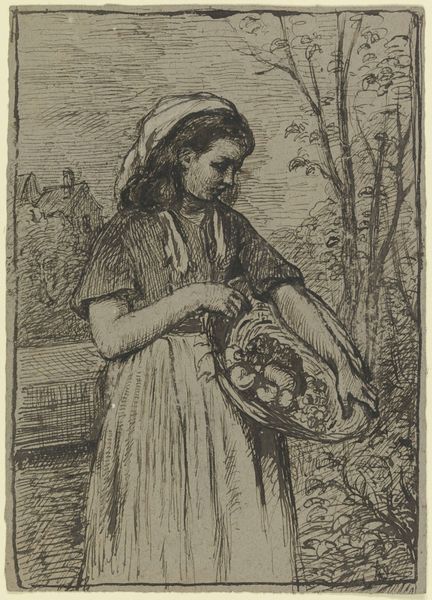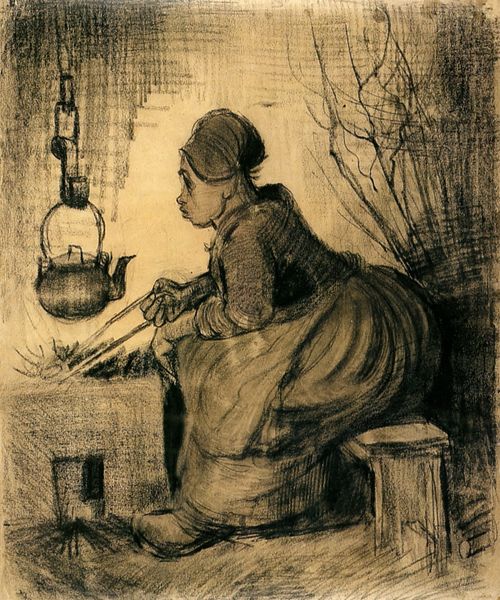
Dimensions: 208 mm (height) x 149 mm (width) (plademaal)
Editor: We are looking at Peter Ilsted’s "Canthareller," an etching from 1893, currently housed at the SMK in Copenhagen. The monochrome palette lends a certain somber quality, highlighting the solitude of the figure. How do you read the narrative of this print? Curator: This image speaks volumes about the realities of women's lives in the late 19th century. We see what appears to be a domestic scene, but let's consider it within the framework of labor and class. The woman, likely of the working class, is sorting mushrooms. The act seems simple, but what does it reveal about the societal expectations placed on women during this period? Editor: It seems like a moment of quiet domesticity, almost mundane. Is there more to it than meets the eye? Curator: Exactly. Consider the absence of others. Where is the man of the house? This etching, to me, is not merely a genre painting; it is a subtle commentary on the burden of domestic duties and the relative invisibility of women's work in the social and economic spheres. How does the artist depict the figure's engagement and disengagement? Editor: You’re right. Her downcast eyes and solitary posture give the impression that she is completely absorbed by it and cut off. The task may be quite tedious. So you see the work as pushing back on this view? Curator: In a way, yes. Ilsted presents this woman with dignity, even reverence, drawing attention to the labor often overlooked. Furthermore, we can question, "who is this art for?" By immortalizing this moment, he elevated it and provoked a dialogue, however hushed, around the societal devaluation of domestic tasks predominantly done by women. Editor: That definitely sheds a new light on my understanding of the piece. The idea of elevating such an ordinary scene through art to offer quiet social critique… it is amazing. Curator: Precisely, art provides avenues for social critique and can unveil underlying complexities within seemingly straightforward scenarios. The image then allows for the foregrounding of marginalized voices and experiences, encouraging an ongoing critical analysis of intersectionality and the tapestry of human lives throughout different periods.
Comments
No comments
Be the first to comment and join the conversation on the ultimate creative platform.

